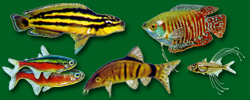- О проекте
- Фотогалерея
- Аквариумные беспозвоночные
- Аквариумные растения
- Аквариумные рыбы
- Альбомы посетителей сайта
- Рептилии и амфибии
- Выставки, встречи, конкурсы
- Магазины, разводни, домашние хозяйства
- Клуб аквариумистов "Хемихромис", г. Петрозаводск
- хозяйство Владимира Челнокова
- Аквариумы Кузьмичева Кирилла
- Дискусоразводня “С.К.А.Т.” С.И.Горюшкина
- Зоомагазин «Бетховен» г.Армавир
- аквариум Лики Аверкиевой
- аквариум Юли из Жаворонок
- аквариум Яны И.
- дома у Михаила Волкова
- зоомагазин Зеленая игуана
- карантинная база Андрея Чурилова
- коллекция Евгения Цигельницкого
- коллекция Константина Шидловского
- разводня Александра Березина
- разводня Владимира Сторожева
- рыборазводня АкваЭкзотика из Лыткарино
- хозяйство Алексея Бринева
- Разные комбинации ламп Hagen
- Сингапурский каталог растений
- надо разбирать
- Библиотека
- Форум
- Правила сайта
- Поиск
Food for Thought
Статья о кормах и кормлении. На английском языке.
Food for Thought
This aquarist's expert opinion should help you feed your fish.
-3.jpg) | Paul Speice has been a hobbyist for 55 years. He has hosted the PBS television programs "Guppies to Groupers" and "Aquatic Maestro." |
During production of PBS's "Guppies to Groupers," a series of 78 half-hour television shows about the aquarium, I blew it. The shows were carried by most of the TV stations around the country, which meant aquarists all over were privy to my mistake. On the show about nutrition and feeding, I fed the fish on display a paste food I'd made.
Actually, my wife, Lois, made it. At the time, there was a formula for making food called Gordon's. I'm sure my version was a form of that. The fish attacked it. I called it "Old Paul's Good Stuff." The frenzied feeding sold it, and my offer to send the recipe upon request resulted in a flood of letters. But I have often wondered whether I'd done my viewers a disservice.
-1.jpg)
The Shotgun Method
The food had been concocted with a pseudoscientific approach. My rationale was simple: if I put everything in it that I could think of, it would be a good food.
Let's consider what a good food must contain. First, it must provide the necessary proteins, carbs, lipids, minerals and vitamins necessary to sustain life. We want our fish to thrive, not exist. Secondly, it must have taste attractants so the fish will eat it. I could have a perfectly balanced food, nutritionally, that fish won't eat, and I'd have nothing. "Old Paul's Good Stuff"? Maybe. We laymen cannot make a food that has all the necessary ingredients, even with my shotgun approach. Don't do it!
"Feeding is natural to fish, and it is part of their survival instinct. They can go weeks without eating."
What goes into a "perfect" food? It provides growth, good color, breeding capability, etc. So it needs many things to do this. If the food has all but one of these things, the fish will be stunted, deformed, lack color, etc., depending on what the missing ingredient would have provided. Buy quality food. But which one?
I recommend Aquarian food. This choice resulted from a two-year feeding comparison of three major foods. This involved identical setups, the same fish and a lengthy observation period. It was hardly scientific. I tested three good foods, but subtle differences in the results, especially in the amount of fecal matter, made the choice clear. This suggested different absorption, usage and metabolism of the Aquarian food.
Feeding is natural to fish, and it is part of their survival instinct. They can go weeks without eating. Fish eat other fish and various other living things. They gorge themselves when possible. No fish in nature ever ate flake food, but at the cellular level the source of a particular protein or mineral isn't important.
When we take the fish out of nature our role as the provider is critical. Not only do we decide what our fish will eat but, also as important, how much. If that last bit sounds like a stretch, consider some things about what is too much. Uneaten food is the primary insult to water quality.
Bad Habits
I mentioned gorging earlier. Undigested food that results from this habit is just as bad as providing too much food. The visual result is gray, cloudy water. Even worse, the unseen problem of water devoid of oxygen because heterotrophic bacteria, exploding in numbers in the presence of this "feast," use it up.
When painting this picture for sixth graders, I describe a goldfish gasping at the surface of the gray water. Enter
the proverbial little brother who thinks the fish is hungry and adds more food, further insulting the water quality.
The food must be eaten. It should be gone in five minutes. If I were to put a "pinch" of food in four times a day and it was always eaten, no harm would be done. If I put the same amount in at one feeding, not enough will be eaten. The rest, lying between the gravel particles, is tomorrow's problem. A serpae tetra's stomach is about the size of its eye. They don't eat much. Control the feeding, and watch the fish eat. Sick fish don't eat.
Different Foods
Live foods are good, especially nonaquatic ones. I say this because aquatic worms can bring aquatic problems with them to aquaria. Enchytraeus (white-worms), small cousins to earthworms, are better than Tubifex (aka pinkworms or sewer worms). Earthworms are great for bigger fish. Insects are good. Swatted houseflies — but none killed with pesticides — are good too. Mosquito larvae (the wigglers in standing water) are good food, but remember, if they aren't eaten, they'll be all over the place. I have firsthand experience regarding this matter. Frozen and freeze-dried foods are desirable. Feed your fish a variety of foods.
There are a few things I should caution you about. Minnows from bait stands are badly stressed and best avoided. Daphnia — a water bug — is an excellent food, but they have a lot of oil and should not be fed exclusively. Do not feed animal flesh to your fish. Don't be lulled by the false economics of using trout pellets as feed. They are formulated for raceway conditions to force maximum growth. The protein content is about 60 percent or nearly double what most fish can use. The excess is excreted and is as bad as uneaten food.
Feeding Techniques and Training
Since feeding is instinctive, the rush to the food, especially in a repetitive situation, can be used in some novel experiments. I was asked, "Could you help my grandson with an idea for a science project?" This request began an effort that garnered the boy in question a first-place prize at a Pennsylvania Science Fair. He trained a single goldfish to associate feeding with a light being turned on. A 20-inch-long tank was used. Three plastic baffles were siliconed into the aquarium, and each one had a 2-inch diameter hole in one corner. The baffles were rotated before installation, resulting in a zigzag path from end to end.
The fish quickly learned the path. At the show our hero spoke out loud, "Goldie, come eat." He then turned on the small pen light he easily palmed and stunned the viewers as the goldfish raced through the maze to the food. You've seen this activity at home and in pet shops. The fish quickly learn to associate feeding with a hand over the aquarium. The fish in the 150-gallon tank in Camp Notre Dame's nature center respond to three taps on the cover glass. I'm experimenting with my 55 in the basement. When I flash the blue can near the glass, I feed the fish. I move the red can in the same fashion but don't feed them. Time will tell on this one.
My 5-year-old son, circa 1960, had seen big oscars leave the aquarium for earthworms dangled above the water many times. A scream brought Lois and I running. He had managed to get an oscar onto the couch while showing his buddy this trick. I kept four 3-inch-long archerfish in a dining room aquarium. They are noted for their accuracy at knocking insects into the water by spitting at them.
-2.jpg) |
| You can feed Tubifex worms to your fish, but nonaquatic whiteworms make for a better choice. Aquatic worms like Tubifex can introduce pathogens into aquaria. |
Unique Feeders
Toxotes jaculator are attractive, fascinating fish. They look a bit like big, flat-topped tiger barbs. One time, while bent over one of my aquariums, I got shot in the eye. I figured that a glint from the frame of my glasses caused this. By moving my glasses around above the water, I was able to get a repeat performance.
This started a little behavior study. I kept swatted houseflies on top of the aquarium. If the archers gave me a squirt, I gave them a fly. Pavlov at his best. I really enjoyed having visitors in those days. Archerfish weren't common in those early times, and even aquarist friends would ask about them. After a little discussion about their accuracy and a few raised eyebrows and remarks, I would hold my glasses over the aquarium and say, "These are a little dirty."
My glasses would receive a quick shot of water. While I finished cleaning my glasses, I would give them my best "take-that" look. Lois mentioned many times the delight she felt while we were taping at SeaWorld in Orlando at 6 a.m. (to avoid the crowds). She was free to walk the grounds. Since the first arrival every morning always brought breakfast, she had first-hand, close-up visits from everything, starting with seals and ending with orcas.
Feed fish good food with some variety. Do not overfeed them. Watch each fish as it feeds. And when you go on vacation for a week, just walk away. Trusting some rookie with the food can is asking for trouble.
»
- 2481 просмотр

